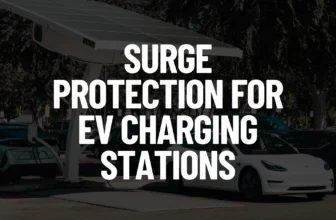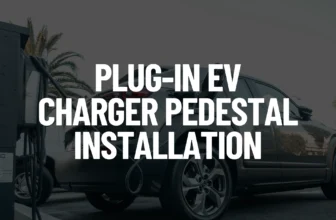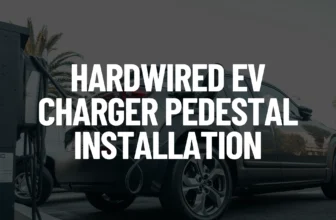Looking for the ideal electrical panel for your EV charging needs?
We’ve curated a list of top-tier brands renowned for their ample space for extra circuits and advanced safety features crucial for EV charger installations.
Whether you’re a homeowner planning an upgrade before installing your EV charger or an electrician seeking reliable panel upgrades to impress potential clients, you’re in the right place.
We’ve experienced the hassle of congested panels firsthand, having upgraded numerous electrical panels – including Circuit breakers, EV charger receptacles or outlets, grounding systems, surge protection devices, wiring, neutral bar, ground bar, main disconnect switch, metering equipment (if applicable), and GFCI (Ground Fault Circuit Interrupter) breaker (if required by local codes).
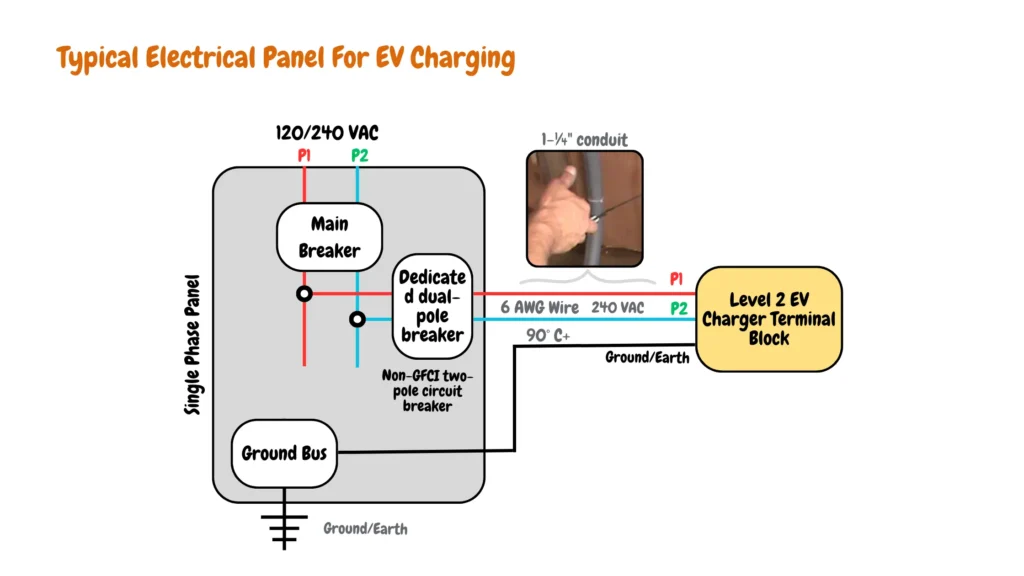
For more intricate setups involving smart EV charging or renewable energy integration, such as solar-powered charging or bidirectional charging, a spacious electrical panel is essential to accommodate electrical components such as circuit breakers, inverter (grid-tied or off-grid), solar PV system disconnect switch, wind turbine disconnect switch, battery storage system disconnect switch, charge controller disconnect switch, surge protection device, monitoring equipment (such as energy meters or smart meters), power conditioning equipment (if included in the service panel), transfer switch (for switching between grid power and renewable energy sources), voltage regulators (if included in the service panel), backup generator connection (if applicable), GFCI breakers (if required by local codes) and grounding system components.
Table of Contents
Best Electrical Panel For EV Charging
Recommended Related Posts:
- Best 200 Amp Panels For EV Charging
- Will I Need a Service Panel Upgrade for My EV Charger?
- EV Charging Subpanels Explained
- Electric Vehicle Charger Circuit Breaker Selection Guide
- Top 5 Best Smart Meters For EV Charging.
Review of The Best Electrical Panel For EV Charging
Here are some of the top electrical panels we recommend for EV charging:
Eaton Circuit Breaker Panel
If you are looking for an electrical panel upgrade for EV charging because your current 100-amp panel isn’t sufficient, we think you will be impressed with the 200 amps Eaton Circuit Breaker Panel – We certainly were!
We recommend the Eaton Circuit Breaker Panel to electric vehicle owners who would like the ultimate electrical panel upgrade that can serve their power-hungry home, and also charge up to two electric vehicles at the same time without reaching 80% of the electrical panel safe load.
In our Eaton Circuit Breaker Panel installation (as shown in the wiring diagram below), we have two power inlets (one from the solar PV system, and one from the electric grid), a 200A main which is safe to run at 160A, a smart meter which comes with a bunch of wires to connect to both the solar PV system and the electric grid, dedicated GFCI breakers for EV charging and other circuit breakers for our home appliances.
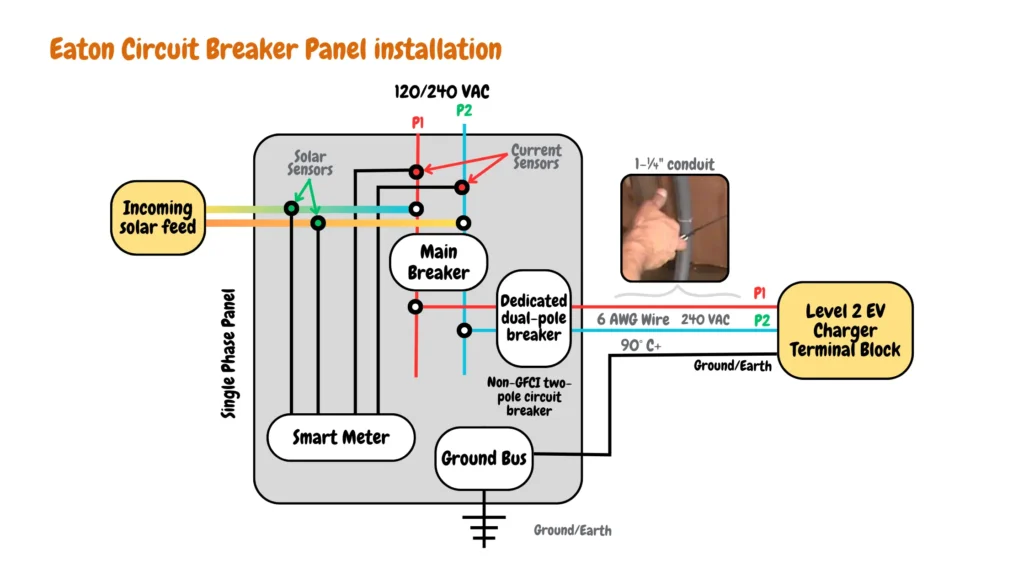
The Eaton Circuit Breaker Panel is our #1 electrical panel upgrade that we recommend that allows you to do a lot more future upgrades in your electric vehicle installations such as adding multiple electric vehicles, energy sources, and electrical components without having to worry about space and electric load management issues.
Eaton’s BR panel is designed for easy installation and offers ample room for distributing power in your home. With a 200 amp main breaker, it can handle significant electrical loads. The panel features 80 spaces for branch breakers, which protect individual circuits like outlets and appliances. It’s suitable for indoor use thanks to its NEMA-1 enclosure rating. To get you started on your EV charger installation upgrade, the panel even includes some common breakers: three BR120s and one BR230.
If you are looking for drawbacks the Eaton Circuit Breaker Panel is one of the most expensive and high-end electrical panels compared to other electrical panels recommended in our best electrical panel for EV charging list, and since it’s a premium product you will enjoy up to 10 years warranty on your EV charging electrical panel.
Square D by Schneider Circuit Breaker Panel
If you are looking for a Single Family Home EV Charger Installation electrical panel that is heavy-duty and offers value for your money, we would recommend the Square D by Schneider Circuit Breaker Panel, you will be able to charge two electric vehicles using two Level 2 EV chargers, and load-sharing with a 60A breaker.
The Square D by Schneider Circuit Breaker Panel also has lots of room for your electrical components, it offers 12 spaces and supports up to 24 circuits making it ideal for complex EV charger installations, you get a high current rating of up to 125 amps with it, enough to power two electric vehicles.
If you are looking for a dedicated electric vehicle charging panel, the 125-amp Square D by Schneider Circuit Breaker Panel would be an even better set-up. This doesn’t mean you can’t use the electric panel as your main panel, of course, you can, but you have to be smart about it, if your home electrical load is not high you can charge your electric vehicle at any time, if your home energy needs are high, you can use smart charging features to charge your EV especially when there are low energy demands from the grid.
Siemens P1224L3125CU Circuit Breaker Panel
The Siemens P1224L3125CU Circuit Breaker Panel is a three-phase main lug panel that offers a 125 Amp main lug load center with 12 spaces/24 circuits, which is enough to power two electric vehicles charging with a Level 2 charger on 60 amps circuit breakers as a subpanel where the main breaker is some distance away as shown in the diagram below.

The Siemens P1224L3125CU Circuit Breaker Panel doesn’t have a main breaker switch, and it receives power from an external main breaker, it packs a lot of features for EV charger installations thanks to its large spacing and circuit support, allowing multiple EV charger set-ups and EV charging accessories add-ons such as smart meters.
Buying Guide for The Best Electrical Panel For EV Charging
When selecting an electrical panel for EV charging, several key factors should be considered to ensure optimal performance and safety:
- Current Rating: The current rating of the electrical panel is crucial for accommodating the power demands of EV charging. Opt for a panel with a high current rating, such as up to 200 amps to support heavy-duty EV charging requirements such as charging two electric vehicles simultaneously without risk of overload, or 125 amps panel for smart charging and dedicated EV charging panel setups.
- Number of Spaces: The number of spaces in the panel determines how many circuit breakers can be installed. For EV charging installations, choose a panel with ample space to accommodate future expansion or accessory installations. Higher-end models with 12 spaces or more offer flexibility for various electrical needs such as smart meters for EV charging monitoring.
- Number of Circuits: Ensure that the panel supports multiple circuits simultaneously, as each EV charging station typically requires its dedicated circuit. Look for a panel that offers a sufficient number of circuits, ideally double the number of spaces provided, to accommodate current and future charging requirements without overloading the system.
- Warranty: A warranty offers peace of mind and ensures protection against potential defects or malfunctions. Prioritize panels with longer warranty periods as they reflect the manufacturer’s confidence in the product’s quality and reliability.
By considering these factors, you can select an electrical panel that meets the specific requirements of EV charging, ensuring safe and efficient operation while providing room for future expansion.
Conclusion
The choice of your electrical panel is dependent on the loads of your home and electric vehicle charging set-ups, as the foundation for your electrical set-up the electrical panel should be properly sized to ensure your EV charger functions safely without overloading the system.
A higher capacity panel such as the Eaton Circuit Breaker Panel allows you to add additional appliances or electrical features in the future such as smart meters, Solar PV systems, and additional circuits for more electrical vehicle charging set-ups.
Those looking for a budget-friendly electric panel for their EV charging can opt for the Square D by Schneider Circuit Breaker Panel, despite being an affordable electrical panel, it packs a punch offering up to 125 amps of current, and supports a total of 12 spaces and 24 circuits.
Remember, a qualified electrician can assess your current setup and recommend the best course of action, whether it’s a simple panel upgrade or not. Upgrading your panel not only ensures safe and reliable EV charging but also future-proofs your home for additional electrical needs and potentially increases its value.
While the cost of upgrading can vary, the benefits are undeniable. Don’t hesitate to explore potential rebates or incentives offered by your local government or utility company to make this investment even more rewarding.
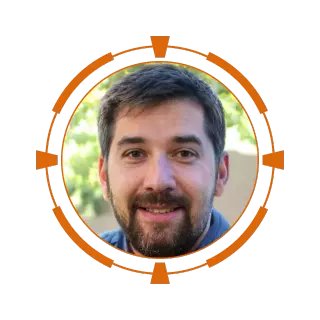
James Ndungu is a certified EV charger installer with over five years of experience in EVSE selection, permitting, and installation. He holds advanced credentials, including certification from the Electric Vehicle Infrastructure Training Program (EVITP) and specialized training in EV charging equipment and installation, as well as diplomas in EV Technology and Engineering Fundamentals of EVs. Since 2021, James has tested dozens of EV chargers and accessories, sharing expert insights into the latest EV charging technologies.
Last update on 2025-07-18 / Affiliate links / Images from Amazon Product Advertising API




![Best Electrical Panel For EV Charging [2025 Reviews]](https://electricvehiclegeek.com/wp-content/uploads/thumbs_dir/Service-Panel-Upgrade-for-EV-Charger-Installation-Featured-Image-r68zeflydrg2xhkf14kbh6p8a3x8nla8tpjcvpnxvg.webp)
![Best Electrical Panel For EV Charging [2025 Reviews]](https://electricvehiclegeek.com/wp-content/uploads/thumbs_dir/EV-Charging-Subpanels-Post-Featured-Image-r68zeflydrg2xhkf14kbh6p8a3x8nla8tpjcvpnxvg.webp)
